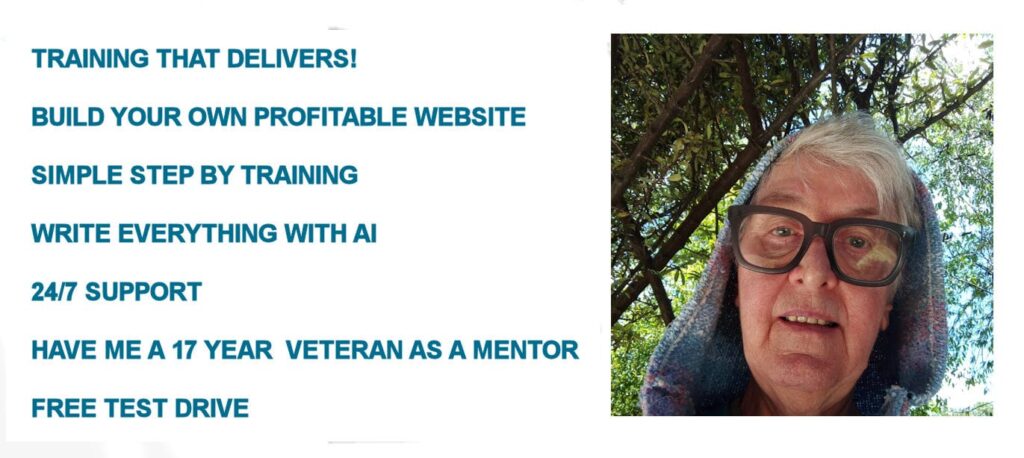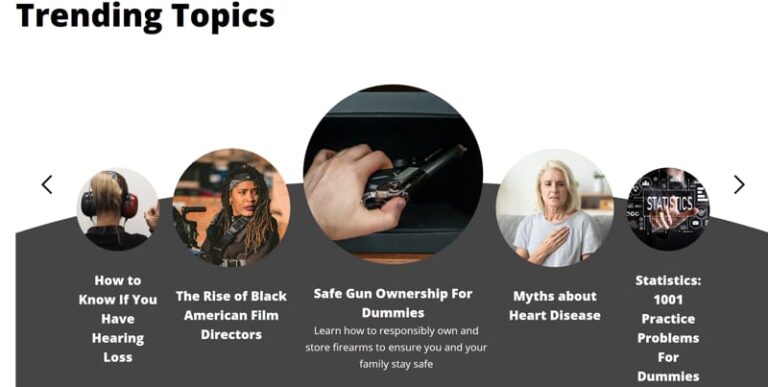Customize your PLR with Chatgpt 4, Make Drab Fab
Private label rights (PLR) content often gets a bad rap. And for good reason – the vast majority of it is low quality fluff churned out by unscrupulous marketers.Yet hidden gems do exist among the rubble. There are a select few reputable PLR vendors producing premium content worth its price tag. These rare creators put in the time and effort to craft informative, well-researched material on par with what you’d find from top publishers. However you may still want to make drab, fab, by mastering the art to customize your PLR with Chatgpt 4.
The PLR conundrum
Sure, scoring hot new PLR from a top notch creator feels like winning the content lottery. You just grabbed proven, money-making articles with zero effort on your part. No one thinks when they press the buy button for PLR content how to customize your PLR with Chatgpt 4.
Hold the celebrations though. Before you dive in posting that prime content across your site, let’s chat about your competition.
See, you’re not the only genius who snatched up this PLR. Every Tom, Dick and Harriet in your niche will be regurgitating those same articles faster than you can say “duplicate content penalty.”
Your so-called “exclusive” PLR winds up plastered all over the internet. Not exactly a competitive advantage, is it?
But it gets worse…
Without customization, you blend into the crowd. Same content, same sales angles, same everything. Buying PLR can be like voluntarily putting on a cloak of mediocrity, that JK Rowlings would be proud of.
Do you really want to be Average Joe, happily sharing generic tips like everyone else? Or do you want to be the leader, the expert – the one they talk about?
Don’t let quality PLR put you in a chokehold. With just a few tweaks, you can transform it into your secret weapon and pull away from the pack.
Let’s start with the Myth Of Duplicate Content.
Until late 2023 Google regarded Duplicate content as being repeated content on one website. Let’s agree that there a lot of websites reporting the same news stories and they all rank. However recently things have changed. Yes, there is evidence to suggest that Google has recently deindexed websites containing duplicate content, such as those using Private Label Rights (PLR) material.
During the last few months, quite a few SEOs and website operators experienced significant falls in their search positions as well as overall visitors due to adjustments made by Google’s algorithms that now aggressively target copied or mirrored contents across different pages or sites.
The aim of these new tweaks is clear – provide users with better search experiences by highlighting fresh content and downgrading those who depend heavily on reused stuff like PLR articles. Evidence is piling up from case studies about the harm done by repeated content to a site’s overall success. However a few tweaks and you have learned how to customize your PLR with Chatgpt 4. Or of course any other AI of your choice.
create Your own Profitable niche site

The Official Google Line
The official word from Google is clear—produce content that’s new and genuinely useful for your audience. To keep things fresh, the major search engines have created high-tech systems that detect and remove pages with a lot of similarities, discouraging any copy-paste tactics online. This continuous push to keep search results top-notch has put websites using PLR content without proper tweaks under the microscope. Be careful with PLR content on your site, as it can sometimes lead to issues if not handled properly. Think of PLR as just the first step; spending time reshaping this material makes all the difference. Tailor each piece until it’s informative and interesting for those who read it. The second step is how to Customize your PLR with Chatgpt 4. Websites can avoid getting penalized or removed from Google search results by reducing duplicate content and keeping their pages unique.
Customize your PLR with Chatgpt 4 is the key to Great Content
I get it – you want quality PLR content but don’t want to spend time reworking it. You saw those amazing new articles for sale and clicked “buy” without thinking twice. I am not saying your finger worked faster than your brain, but you don’t want more dead wood you don’t use on your hard drive.
Suddenly you’re having second thoughts. You realized everyone and their mother bought those same articles. How will you stand out from the me-too crowd? PLR personalization is no longer the arduous chore you dreaded. The game has changed.
ChatGPT makes customizing PLR faster and easier than ever. This clever AI will rewrite and reformat your content with just a few prompts. No more slaving away for hours trying to inject your own flavor.
In mere minutes, ChatGPT can transform lackluster PLR into unique gems that sparkle with your brand’s personality. I’ll show you how with some simple copy-paste tricks.
Before you can say Jack Robinson, you’ll have content that captivates readers and keeps the search engines smiling. Let your competitors keep their plain vanilla PLR – you’ll have the chocolate chip mint with a chocolate flake in it.
Let me reveal the secrets to making PLR your own with virtually no effort. Bid goodbye to writer’s block and yawns. Just watch and learn as I turn this generic content into specialized ammunition for your arsenal…
The Crucial First Step is Rewrite your title
Give your content a new label bursting with intrigue, controversy, or curiosity. Make readers instantly crave the story or solutions inside.
Remember, a title is like a first impression on a hot date. A bad one kills the mood fast. A magnetic one piques interest and desire. Even if you make only one change the title, you must customize your PLR with Chatgpt 4. Nothing screams I am too lazy to make changes than ten articles with the same title.
Take 2 minutes right now to re-title that PLR. Because a lousy title will sink your content as fast as a rock. The new, improved, can’t-look-away title you create? Now THAT’S a life preserver.
I put in the original title into Claude 2 and ask it to rewrite my title using SEO keywords, five times. Then I choose the title I want. it’s not as if you even have to think about changing your title. ChatGpt4 does all the heavy lifting for you.
Is the Text in Long dry paragraphs without Subheadings?
That’s an easy one4e to deal with. Copy and paste the long paragraph into the AI of your choice and say
“rewrite this text. using shorter paragraphs”.
Not all PLR owners use sub headings.
Subheadings are extremely useful in blog writing. The first major benefit they provide is improved scanability for readers. Blocks of texts can appear dense and uninviting. By breaking up content under clear subheadings, you allow readers to quickly skim for the portions most relevant to their interests and needs. This is especially important in a mobile context where screens are small.This is a really effective way to customize your PLR with Chatgpt 4, and again you just have to copy an paste and say “please write an SEO optimized subheading every 300 words or so.
Additionally, subheadings lend structural organization to posts through hierarchy and grouping related points under relevant section titles. This enhances comprehension and allows your audience to efficiently process information in a logical flow dictated by the sequence of heads and subheads.
Optimized subheadings that target important keywords also provide search visibility gains. They signal to both search engines and people what each section focuses on, leading to higher click-through rates from SERPs and better on-page engagement.
Subheadings further serve to actively guide the reader through the article step-by-step from introduction to conclusion. They act as a visible roadmap that facilitates easy navigation through key points and arguments, smoothing the reading experience.
Finally, the process of writing good subheadings forces writers to clarify the primary focus and purpose of each section within a piece. This strengthens message coherence and the cohesiveness of posts.
In essence, subheads powerful tools for readability, structure, SEO, user guidance and writing clarity in blogging. Their use merits consideration in almost all articles and blog content.
Adding Sub Headings with AI
I use this prompt, when there are no subheadings. ‘
“Analyze the entire article below and insert headings or sub- headings where appropriate to make for a better reader experience. Do not change the text.” … then copy and paste the article below the prompt.
Creating Interesting Introductions and Conclusions.

At its apex, the article database swelled to over 5 million manuscripts contributed by some 120,000 writers. These articles were estimated to have been republished a staggering 500 million times collectively around the web.
Showcasing tremendous organic reach and value. New article submissions peaked at 450,000 annually while established pieces continued generating 800,000+ social media shares monthly even in the platform’s final years. Chris had a series of trainings for aspiring writers. I had at one point over 1,000, 000 words published on this platform, with over twenty different pseudonyms.
Chris was a great fan of introductions and conclusions. In fact, his training went like this. Write a compelling interesting title. Add an introduction which presents an overview of the article. Then write what you are going to tell them, then write what you are telling them with subheadings. Finally, make an interesting conclusion.
The Problem with AI Introductions and Conclusions is they are boring and Robotic.
They tend to follow a very robotic formula, as if their teacher was a tenth rate writer struggling to keep up.
Introductions:
Rather than simply stating the topic, try opening with:
- A brief relatable anecdote or story
- An interesting factoid or surprising statistic
- An attention-grabbing quote from an expert/public figure
- A thought-provoking rhetorical question
The goal is sparking immediate intrigue before providing helpful context about the topic’s background and goals.
Conclusions:
Instead of just dryly summarizing key takeaways, consider closing with:
- A call-back to an intriguing introductory element
- A reflective, benefit-driven summary tied to reader needs and desires
- A forward-looking prompt to take action or learn more
- A big-picture reinforcement of why this topic matters
Human touches in both areas—anecdotes, surprises, questions, relevance—can better form authentic connections. The aim isn’t following a script but rather emulating the natural cadences of open and impactful written communication.
An Example In an article about perseverance
Introduction : “Michelangelo once said “I saw an angel in the marble and carved until I set him free.” As creators in any realm—from art to business—could we all benefit from visualizing the potential within our ideas, plans or talents…and relentlessly sculpting until their highest forms emerge?”
Conclusion to match: We all have a little David or Sistine Chapel ceiling residing in our imaginations, waiting to materialize. Michelangelo gifted us the timeless reminder to envision and carve away at that raw potential relentlessly. Because you never know what masterpiece the world might unveil through your perseverance.
I asked Claude to to write me a story around a historical figure to be used as an introduction and a conclusion for an article about perseverance.
Crafting a Faq’s Page
Answering your reader’s questions constitutes an invaluable yet underutilized tool for bloggers who want to boost visitor engagement.
Your readers primarily use the internet to resolve their most pressing queries, and sites that preemptively provide helpful responses will win out. Each well written answer attracts more eyes, raises credibility, and bonds critical reader relationships.
To best harness questions for engagement, website owners must thoroughly understand core readership and what knowledge gaps likely exist. Consult polls, past user analytics, industry research and forums to accurately identify reader needs around a topic. Additionally use public search data tools like AnswerThePublic highlighting most common inquiries in a niche.
Cross-referencing external insights against your own expertise
This permits curating an optimal list of questions offering maximum value potential for visitors. For instance, around a topic like fibromyalgia, research surfaces countless around diagnosis, treatment options, symptoms, lifestyle factors and more. Prioritize what aligns best to reader needs and one’s abilities.
The resultant list provides abundant inspiration for content enhancements. One could publish all responses in a single resource like an FAQ page. Or better yet, you can create tailored articles around several questions as sub-topics – truly showcasing care through service to each audience subset.
“Substitute ‘damn’ every time you’re inclined to write ‘very;’ your editor will delete it and the writing will be just as it should be.”
Mark Twain
Change the Tone of the PLR

In today’s noisy online world, simply publishing bland PLR content no longer suffices. While convenient, such broadly applicable content generally lacks distinct voice and the engaging qualities modern audiences increasingly demand. Yet finding one’s own unique authorial voice as a fledgling website owner can prove challenging amidst far flashier influencer competition.
Thankfully, AI tools like ChatGPT empower owners to meaningfully enhance existing content without overextending time or skills.
the Key
The key lies in judiciously utilizing ChatGPT guidance to inject hints of color, wit or surprise within content while preserving tone suitability for one’s niche. For instance, health content requires great care to remain appropriate for often vulnerable audiences despite desire for engagement.
When using ChatGPT to punch up content, err on the side of minimalism and high specificity in prompts. Perhaps rewrite only a paragraph or two initially, explicitly dictating preferred voice. Adjectives like “slightly more engaging” combined with clear niche context allow ChatGPT to suggest heightened liveliness that aligns to audience needs. If given too much latitude, it may push engagement too far without fully grasping context limitations.
Content enhancement via AI assists the entire owner journey – efficiently boosting originally bland materials through selective improvements while crucially retaining full control over final tone and viewer appropriateness. With thoughtful fine-tuning guidance, websites can unlock content that uniquely captivates amidst loud competition.
examples of Tones GPT can write in
- Conversational – Casual, friendly tone using first and second person (I, you) to make the reader feel included in the conversation.
- Academic – Sophisticated vocabulary and style you would find in scholarly journals or scientific papers.
- Humorous – Infusing lightheartedness and wit to entertain readers while informing them.
- Inspirational – Uplifting tone focusing on optimism, motivation, and highlighting the best in people.
- Opinionated – Strong personal perspective voiced to sway readers to share your viewpoint.
- Literary – Thoughtful, descriptive tone painting vivid scenes and characters much like a novel.
- Newspaper Journalism – Matter-of-fact reporting just relating insights and events without sensationalism.
- Advertorial – Promotional writing style subtly highlighting products or services in a way that reads like traditional articles.
- Instructional – Practical tone teaching actionable skills or providing a how-to procedural guide.
- Contemplative – Reflective, philosophical examination of deeper meanings inviting introspection from readers.
The Advantage of Using an Actual Tone in your blog posts.
Writing as newspaper journalist, or an expert copywriter, or a conversational blogger, makes your content sound more human. There are lots of reasons for this but not least is the fact that the blog has the same tone as if all the editing content is singing from the same hymn sheet.
Storytelling
If there’s one thing that most people love, it’s a good story. Just ask Hollywood.
Infusing stories into your PLR content will transform it from mundane to captivating.Let’s imagine you’re a young, healthy 25-year-old with no personal experience with a health condition like fibromyalgia. However, you want to provide helpful information and products to people suffering from it. Bt infusing your story you can customize your PLR with Chatgpt 4 very effectively.
An Example of a personal story to Customize your PLR with Chatgpt 4
I was only ten years old when I had an experience that would shape my future in ways I never could have imagined. One sunny afternoon, while playing on the swings in the local park, I lost my grip and fell to the ground. The fall knocked the wind out of me, and I lay there for a moment, stunned and scared. As I picked myself up, dusted off my scraped knees, and wiped away my tears, I realized that I had a choice: I could let this setback define me, or I could use it as a chance to grow.
That day, I learned the value of resilience, a lesson that would serve me well in my future career as a copywriter. Whenever I face rejections and critiques that come with the job, I think back to that moment on the swings and remember that I have the strength to pick myself up and keep going, no matter how many times I might fall.
In a situation like this, creating an alias as the face of your website allows you to build rapport despite lacking firsthand experience. You can legally create a pseudonym, much like Subway did with Jared Fogle being the non-expert spokesperson.
Since you don’t have real stories to share from living with fibromyalgia, you could leverage Chatgpt to generate fictitious but inspiring tales from the perspective of a sufferer who finds natural relief. Focus the stories on uplifting emotions like hope, empathy, and perseverance.
This is a suggested prompt.
” I need you to create a short, personal story about how I suffered from fibromyalgia and recovered naturally. It should be inspiring, heartwarming and make fibromyalgia sufferers feel better.”
Concluding Customize your PLR with Chatgpt 4, Make Drab fab.
When faced with bland PLR content lacking narrative appeal, I drew inspiration from my late father who was a fantastic raconteur. One of his favorite saying that spinning an engaging story snares audiences far faster than sterile facts alone ever could, so I set about infusing the lifeless paragraphs with compelling anecdotes and dashes of gentle humor to bait and hook browsing readers much like a tasty morsel ensnares hungry fish; therefore, through lively storytelling enhancements, the once boring content was thus transformed into a showcase of resonance over rationality, consequently proving Dad’s witty wisdom that facts may inform but heartfelt stories spark true human connections – and page views.






